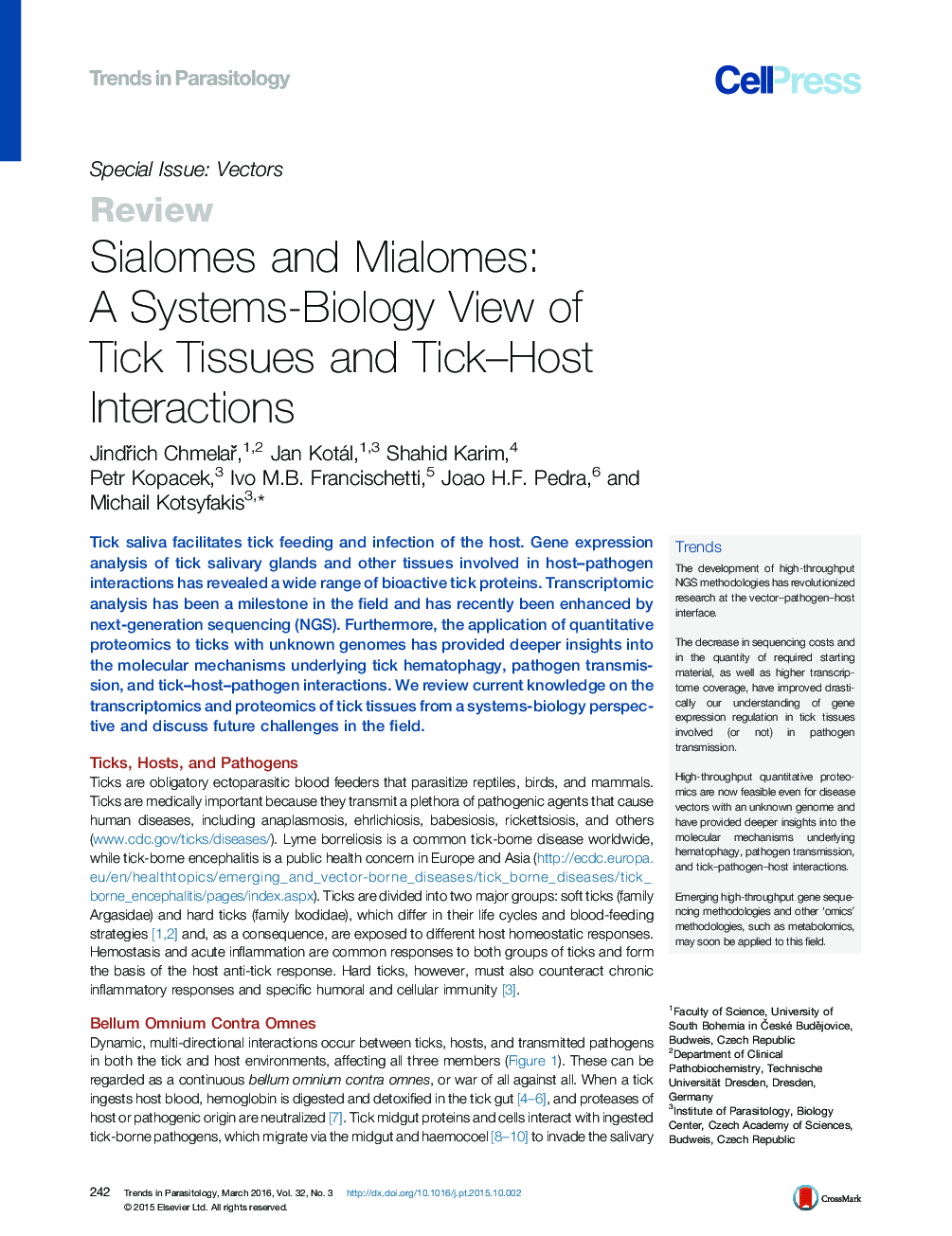| Article ID | Journal | Published Year | Pages | File Type |
|---|---|---|---|---|
| 3422981 | Trends in Parasitology | 2016 | 13 Pages |
Tick saliva facilitates tick feeding and infection of the host. Gene expression analysis of tick salivary glands and other tissues involved in host–pathogen interactions has revealed a wide range of bioactive tick proteins. Transcriptomic analysis has been a milestone in the field and has recently been enhanced by next-generation sequencing (NGS). Furthermore, the application of quantitative proteomics to ticks with unknown genomes has provided deeper insights into the molecular mechanisms underlying tick hematophagy, pathogen transmission, and tick–host–pathogen interactions. We review current knowledge on the transcriptomics and proteomics of tick tissues from a systems-biology perspective and discuss future challenges in the field.
TrendsThe development of high-throughput NGS methodologies has revolutionized research at the vector–pathogen–host interface.The decrease in sequencing costs and in the quantity of required starting material, as well as higher transcriptome coverage, have improved drastically our understanding of gene expression regulation in tick tissues involved (or not) in pathogen transmission.High-throughput quantitative proteomics are now feasible even for disease vectors with an unknown genome and have provided deeper insights into the molecular mechanisms underlying hematophagy, pathogen transmission, and tick–pathogen–host interactions.Emerging high-throughput gene sequencing methodologies and other ‘omics’ methodologies, such as metabolomics, may soon be applied to this field.
